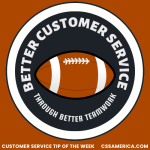
She left me a voice mail, and I prefer to respond via e-mail. She talks really fast, and I prefer a more casual speed. What she wants most is to be heard, and what I want most is to have my problem fixed. She wants to be walked through a process by an employee, and I want the self-service option.
She is the customer. I am the employee. We could not be more different.
But what if I prefer voice mail, I talk fast, I want to be heard, and I want that 1-on-1 employee support? Then we’re the same, correct?
The point is not in the determination of whether we’re the same or different. The point is that we can’t make assumptions that we and the customers are the same.
How I prefer to be communicated with, how I prefer a situation be handled, how I prefer to get a need met may be the same as 70% of my customers, but what about the other 30%? If I believe that they are like me, I could deliver some pretty lousy service to those 30%.
This is when we talk about the importance on not assuming the customer is just like us. This is when trying to convey empathy is so important. Because customers want their need or issue addressed, but many also want it addressed in a certain manner, and if we don’t take the initiative to identify not only what they want but how they want it received or handled, we could have a dissatisfied customer.
Don’t just describe what you’ll do for the customer, but confirm that will work. Don’t just assume how you’ll communicate with them, but ask their preference. Don’t just overlook the particulars of their situation, ask them for the details.
To deliver great customer service, we have to avoid the assumption they are like us and – instead – confirm the reality. Assume they’re different; that focus will force you to ask them about themselves, their needs, their issues, and their preferences. It will put you in a learning mindset, and it will make you better at serving them in the best manner possible.
Assume the customer is different from you.























